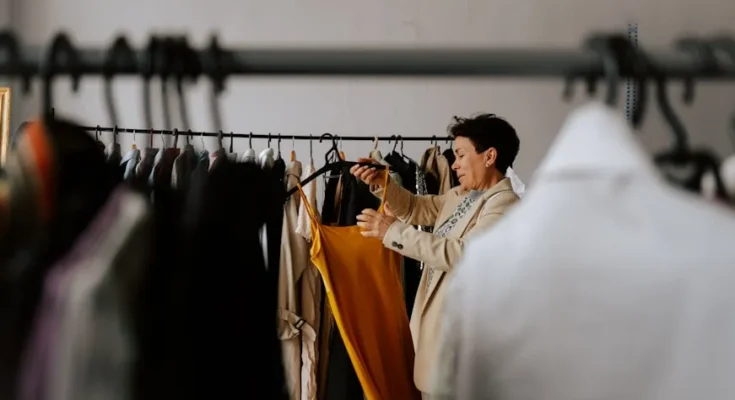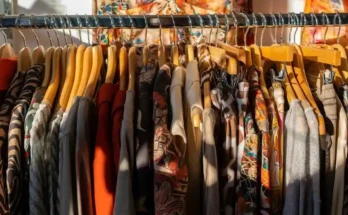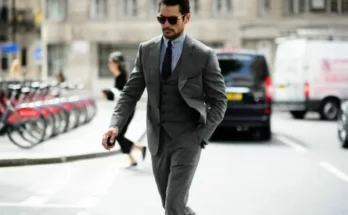More Than Just Clothes:
Fashion is often seen as frivolous—a world of catwalks, glamour, and ever-changing trends. But at its core, fashion is storytelling. It’s how we present ourselves to the world, how we communicate without speaking. Through fabric and form, fashion captures our moods, dreams, identities, and even revolutions.
From tribal markings to haute couture, fashion has always mirrored the society it lives in. It’s not just about what we wear—it’s about why we wear it, how it makes us feel, and what it says about the world we inhabit. Fashion is history stitched into fabric. It’s politics woven with thread. It’s rebellion tailored with precision. And in the 21st century, fashion is becoming more personal, more inclusive, and more powerful than ever before.
The Origins of Fashion:
-
From Function to Form
Long before fashion became a billion-dollar industry, it served a simple purpose: protection. Early humans dressed in animal skins and natural fibers to guard against the elements. But even then, distinctions began to emerge. Clothing began to signify more than mere function—it marked tribe, status, and role in the community.
As civilizations advanced, so did the complexity of dress. Ancient Egyptians used linen to symbolize purity. Romans differentiated classes through togas. In many cultures, fashion became inseparable from power and social hierarchy. What you wore could elevate you—or exclude you.
-
Cultural Identity Through Clothing
Traditional dress has always been a strong marker of cultural identity. Think of the intricate embroidery of Indian saris, the geometric patterns of African Kente cloth, or the elegance of a Japanese kimono. These garments aren’t just beautiful—they carry centuries of heritage, spiritual symbolism, and communal pride.
Fashion, in this sense, is preservation. It keeps the past alive and gives voice to culture in a world that’s constantly changing. In many ways, our clothing is our memory.
Fashion and the Forces of Change:
-
Fashion as Resistance
Throughout history, fashion has often been used to defy, disrupt, and declare. In the 18th century, French revolutionaries wore the Phrygian cap as a symbol of liberty. In the 1960s, miniskirts and bell-bottoms became symbols of youthful rebellion and freedom. In the 21st century, movements like Black Lives Matter and feminism have turned fashion into a powerful platform for political expression.
Designers are now creating not just for aesthetic but for impact—embedding messages into collections, challenging norms, and raising awareness through their runway shows and campaigns.
Fashion is not passive. It can be protest stitched in silk, defiance wrapped in denim, or unity printed on a cotton tee.
-
The Role of Icons and Movements
Every era has its fashion icons—individuals who not only embrace trends but define them. From Audrey Hepburn’s timeless elegance to Prince’s flamboyant gender-fluid looks, fashion has often followed where bold individuals have led.
Social movements also shape what we wear. The feminist wave of the ’70s encouraged women to trade skirts for trousers. The grunge scene of the ’90s made ripped jeans and flannel mainstream. Today, gender-neutral fashion and sustainable clothing are emerging not from runways alone, but from people and protests.
Fashion reflects the heartbeat of its time.
The Fast Fashion Revolution:
-
Speed, Accessibility, and Impact
With the rise of brands like Zara, H&M, and Shein, fashion has become faster than ever. What once took months to design, produce, and distribute now happens in weeks—sometimes days. This “fast fashion” revolution made trendy clothing affordable and accessible to the masses. But it came at a cost.
Fast fashion thrives on speed and scale, often at the expense of labor rights and the environment. The industry contributes significantly to global pollution, and workers in many developing countries face poor working conditions to meet production demands.
Fashion is no longer just about the end product—it’s also about the journey of that product, from fabric to hanger.
-
The Rise of Conscious Consumers
In response to fast fashion’s dark underbelly, a new wave of conscious consumers has emerged. These are individuals who care about how their clothes are made—not just how they look. They seek transparency, ethical sourcing, fair labor, and sustainable practices.
Slow fashion, upcycling, and thrifting are not just trends—they’re statements. Wearing vintage is now fashionable. Supporting local designers is now cool. Renting outfits instead of buying them is now chic.
Today’s fashion-forward individual is not only style-savvy but socially and environmentally aware.
Fashion Meets Technology:
-
Digital Fashion and Virtual Identity
As the physical and digital worlds continue to blend, fashion has entered the realm of the virtual. In online spaces—from video games to virtual reality—avatars are being dressed with the same care as real-world wardrobes. Brands like Gucci and Balenciaga are already releasing digital-only collections for the metaverse.
In a world where social media is often the stage, digital clothing allows users to express identity without waste. You may never own a digital jacket in real life, but online, it becomes part of your personal brand.
Fashion is no longer bound by physics. In the digital space, imagination is the only limit.
-
Smart Clothing and Wearable Tech
Technology is also transforming what clothing can do. Smart fabrics that monitor heart rate, jackets that charge your phone, and shoes that track your steps are just the beginning. Fashion is evolving into function and form at once.
This integration of tech and textiles will shape the future of not just how we look—but how we live.
Personal Style in the Age of Individuality:
-
Breaking the Rules
Once, fashion followed rules—no white after Labor Day, shoes must match the bag, gender-specific clothing only. But today, rules are meant to be broken. Personal style has emerged as the most important trend of all.
Fashion is now a playground where self-expression matters more than approval. Men wear skirts. Women wear tuxedos. People wear what makes them feel right, regardless of gender, occasion, or expectation.
Style is no longer about fitting in. It’s about standing out.
-
Social Media and the Democratization of Fashion
Instagram, Pinterest, TikTok—these platforms have made fashion more democratic than ever. No longer is style dictated solely by fashion magazines or luxury houses. Influencers, micro-creators, and everyday people are setting trends with a single post.
The runway is now everywhere—from city sidewalks to smartphone screens. Style inspiration can come from a fashion blogger in Seoul, a skater in LA, or a grandmother in Milan. The world has become a digital fashion show—and everyone’s invited.
Conclusion:
At the end of the day, fashion is deeply personal. It’s about more than following trends—it’s about telling your story. It’s the quiet confidence of a well-fitted suit, the boldness of bright lipstick, the comfort of worn-in jeans. It’s what you choose when you want to feel powerful, invisible, seen, rebellious, or simply like yourself.
As we look ahead, fashion will continue to evolve. New fabrics will be invented. Trends will rise and fall. But the essence of fashion—its ability to express, connect, and transform—will remain timeless.
We don’t just wear clothes. We wear who we are. And sometimes, we wear who we hope to become.




